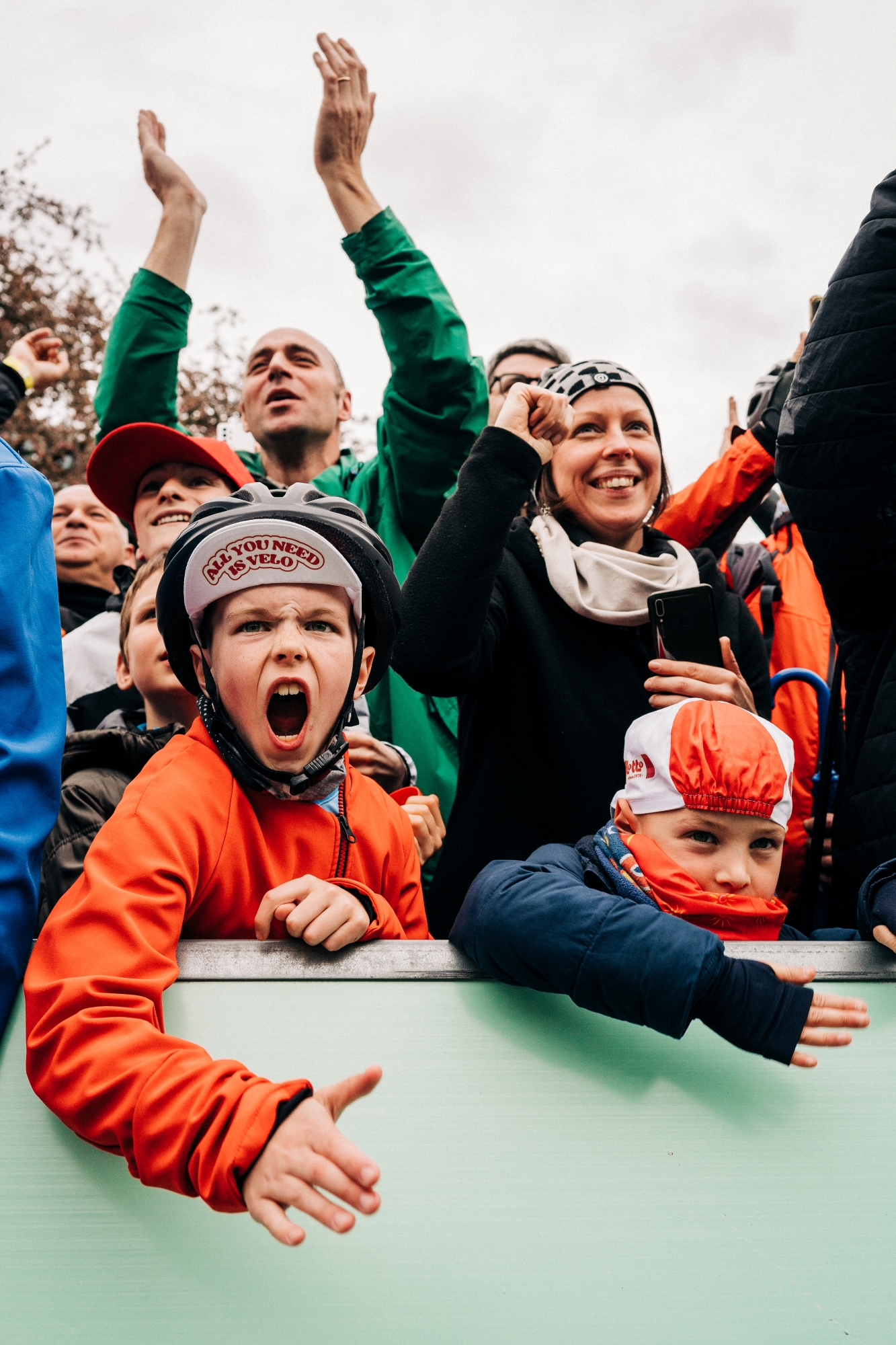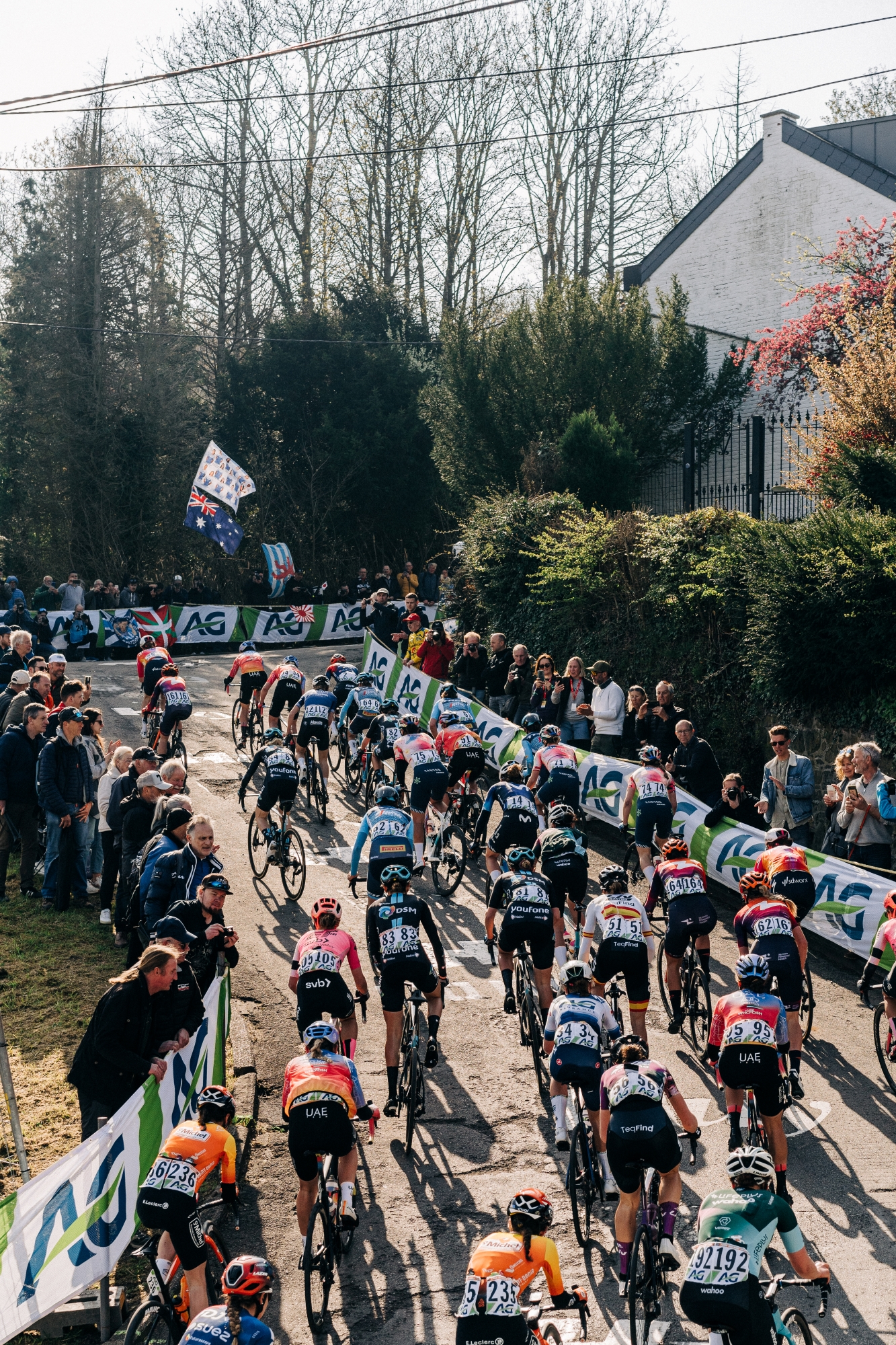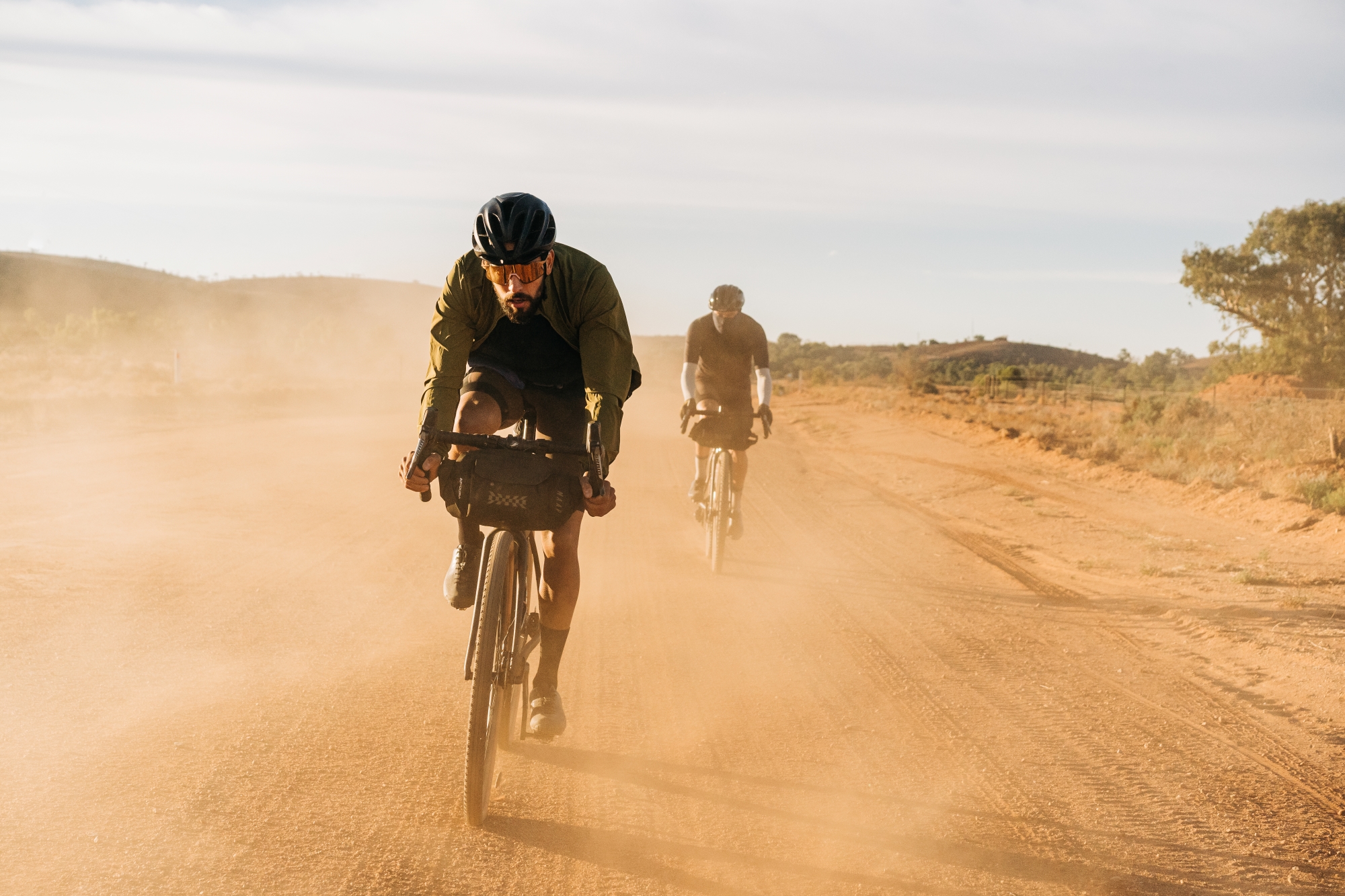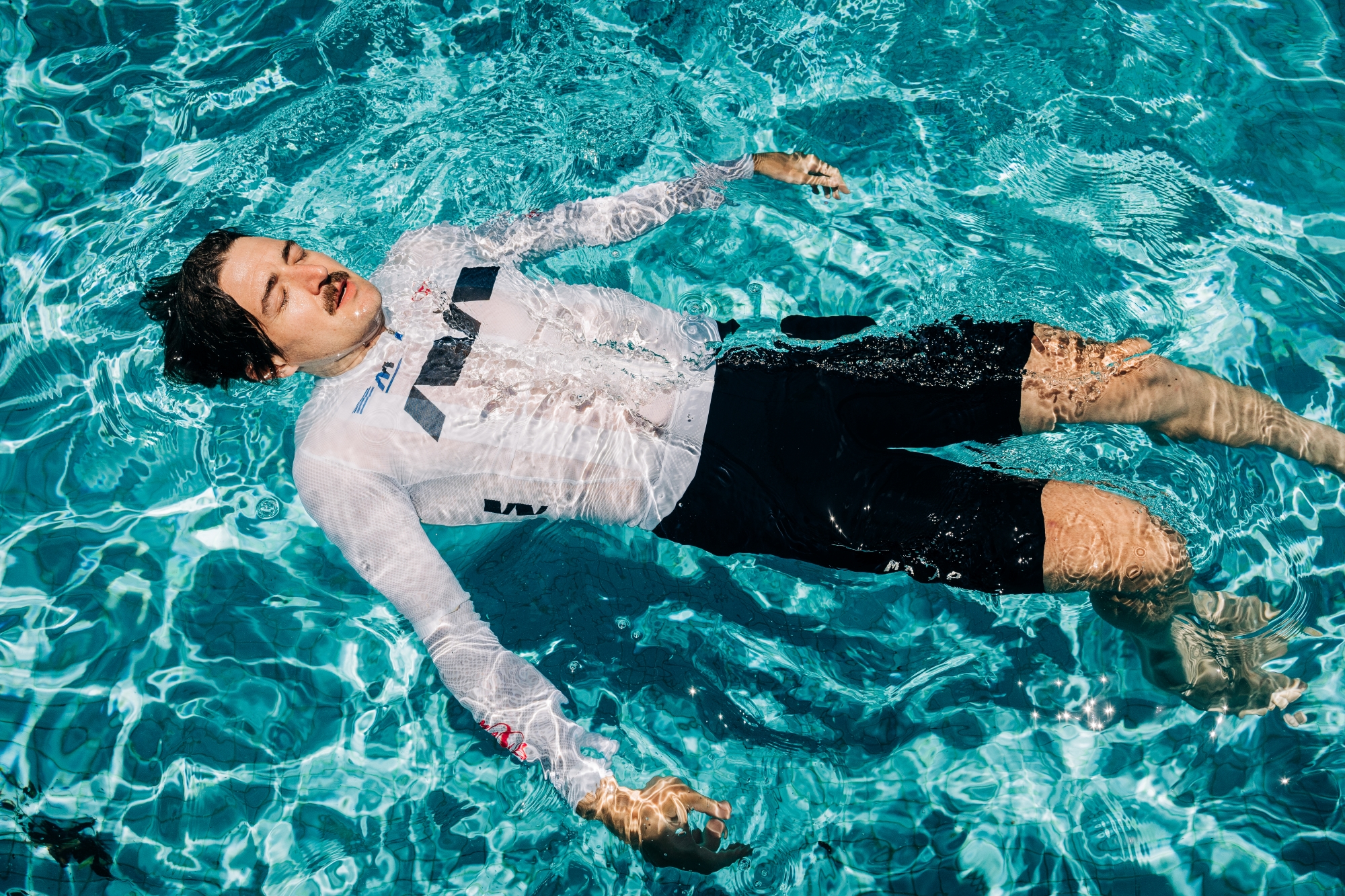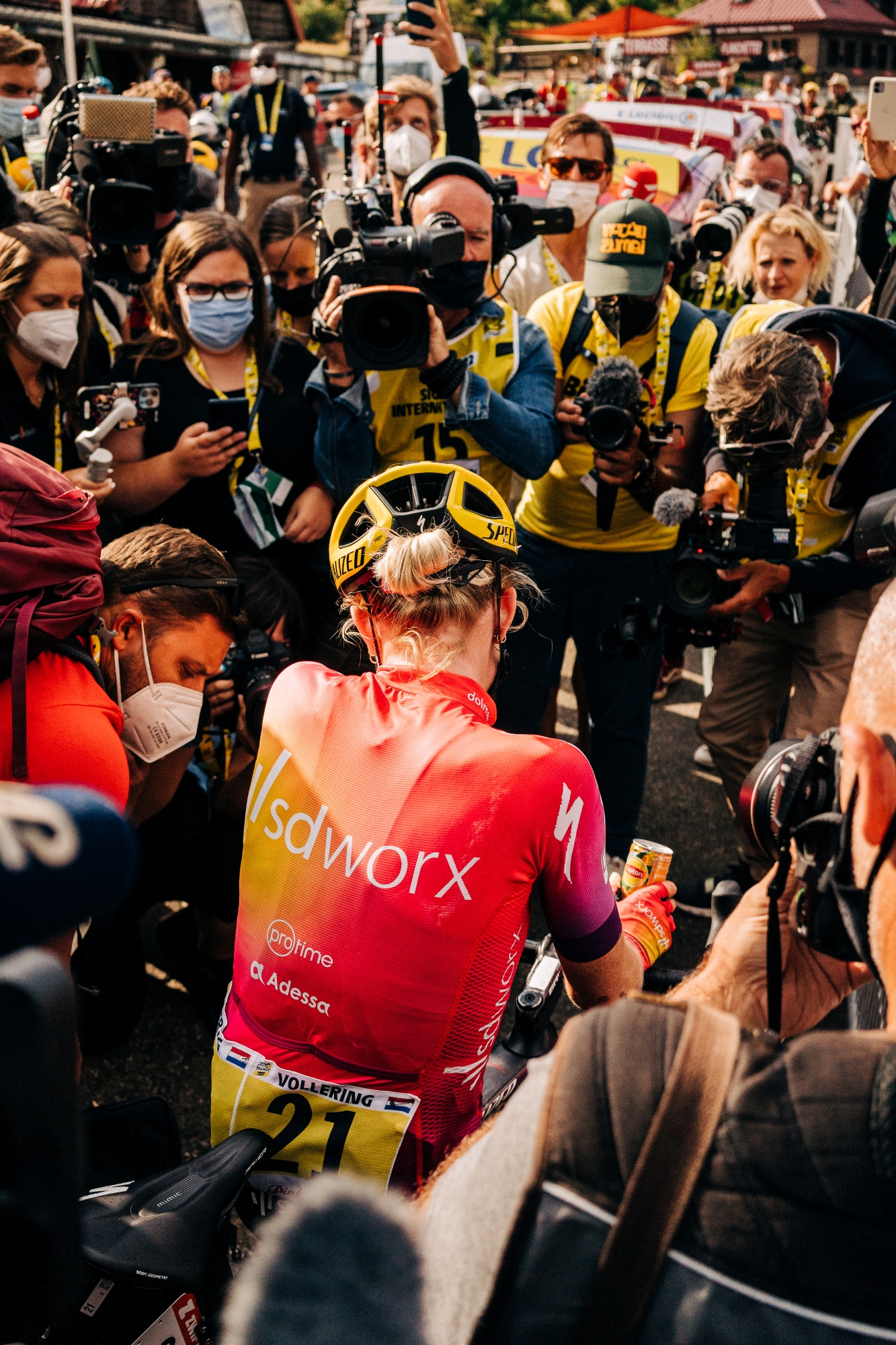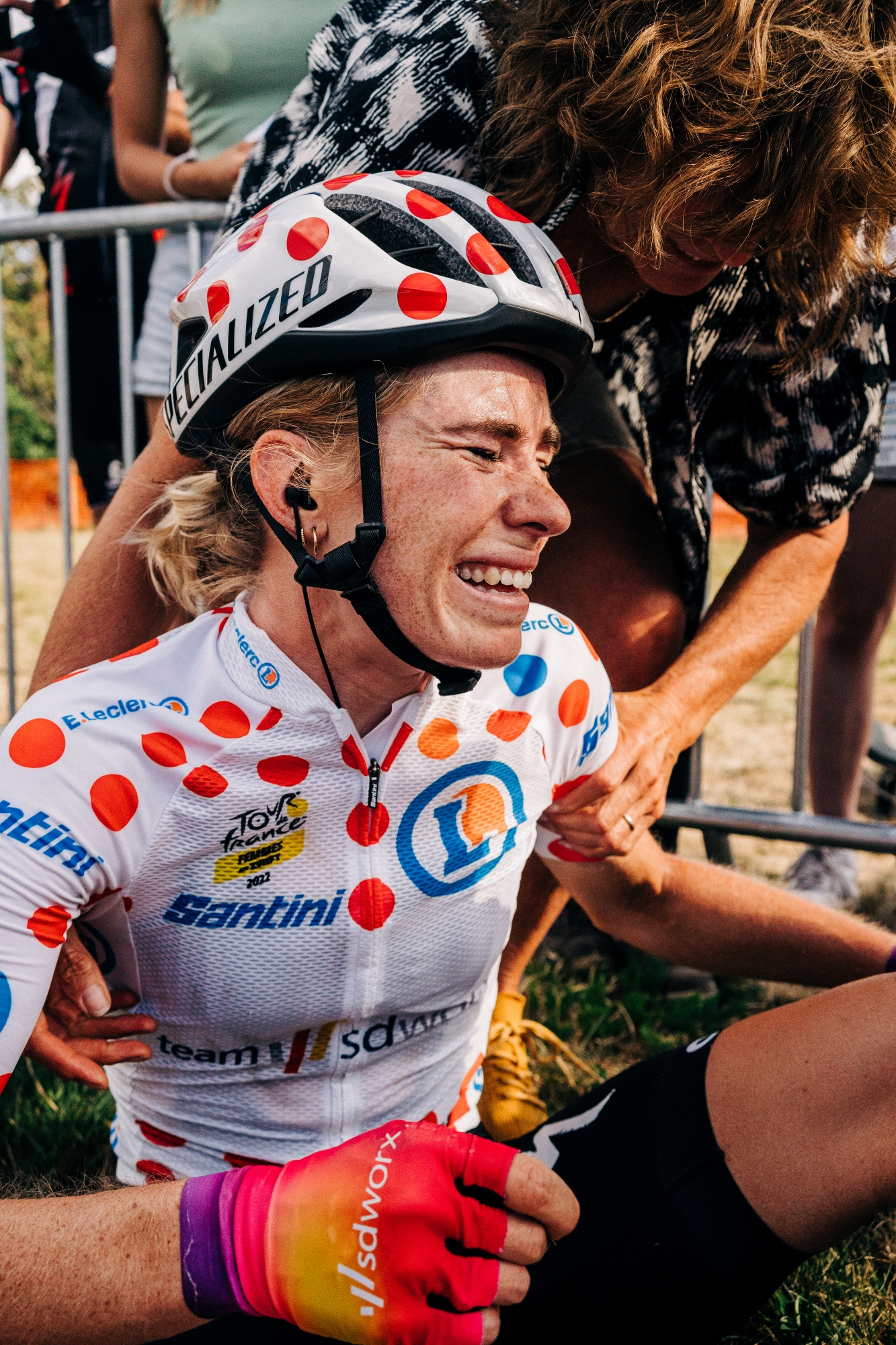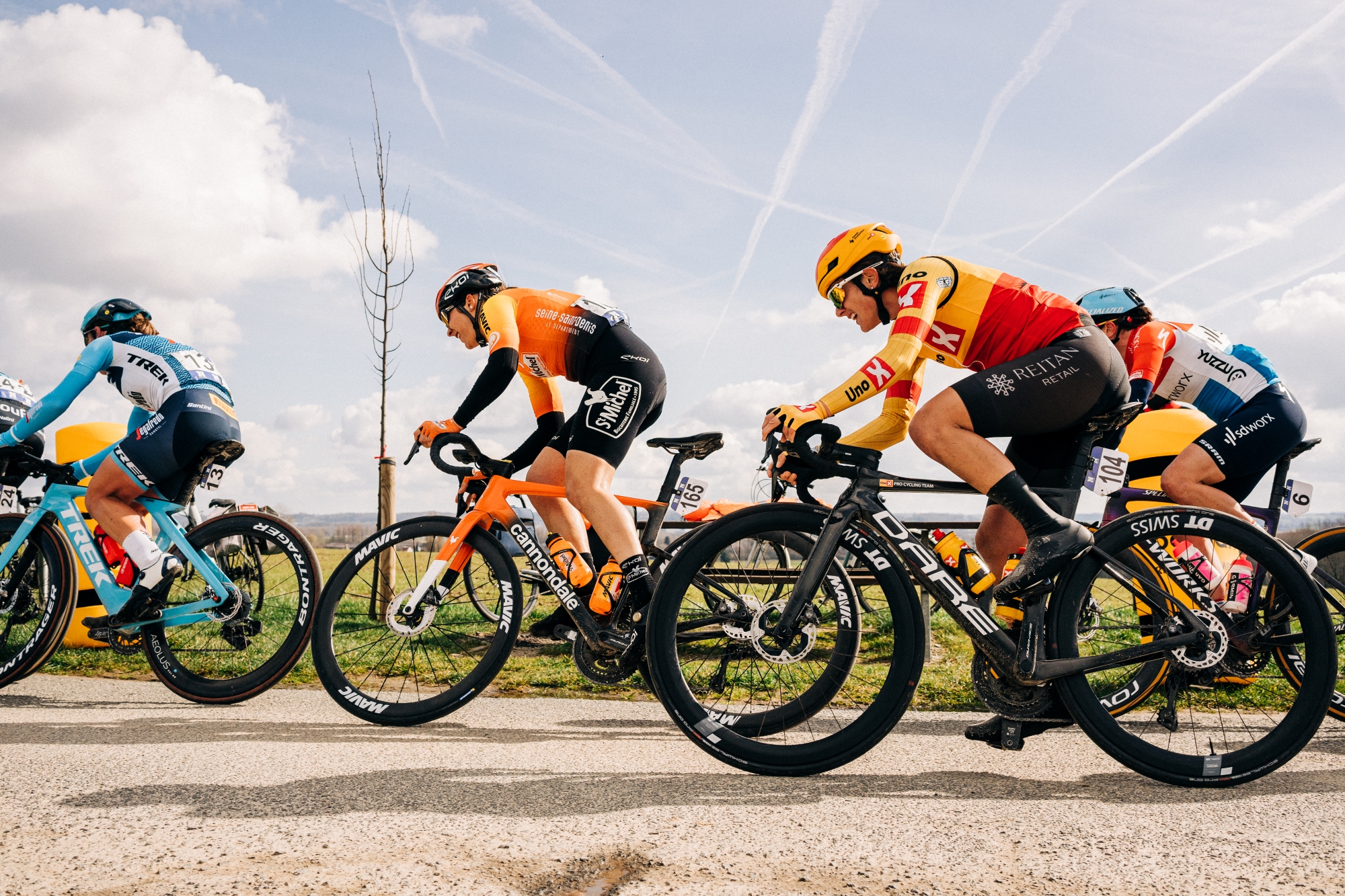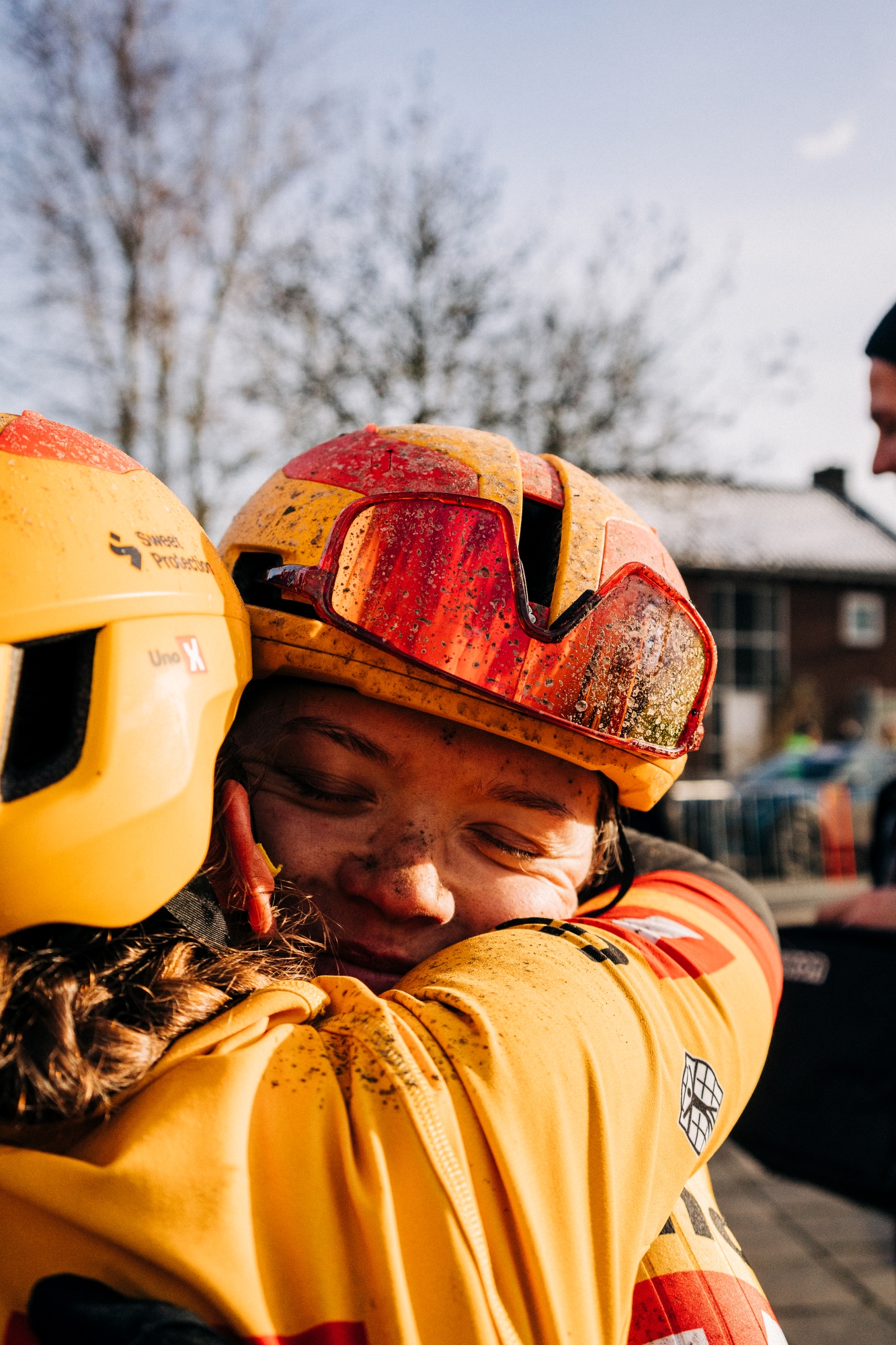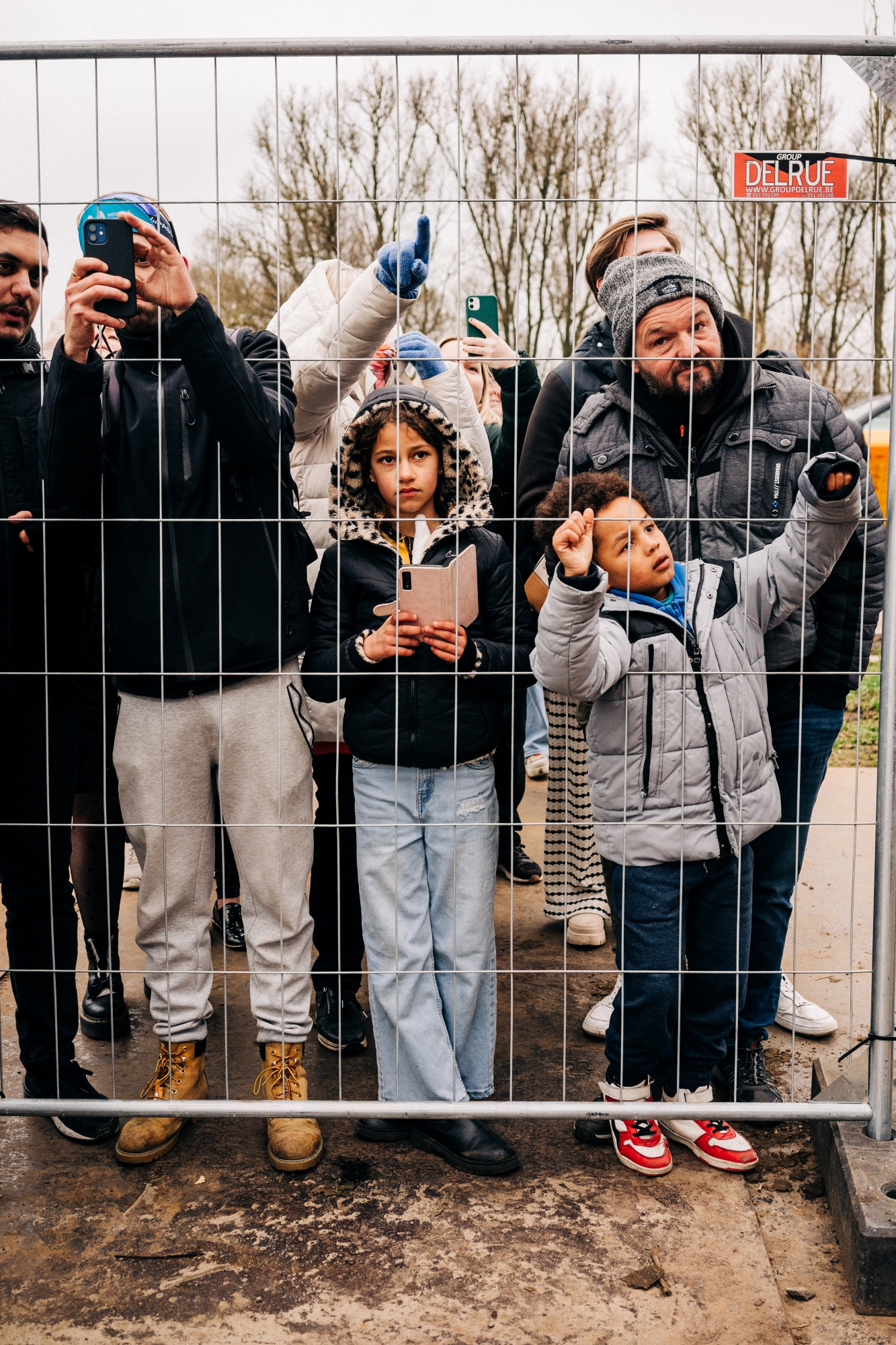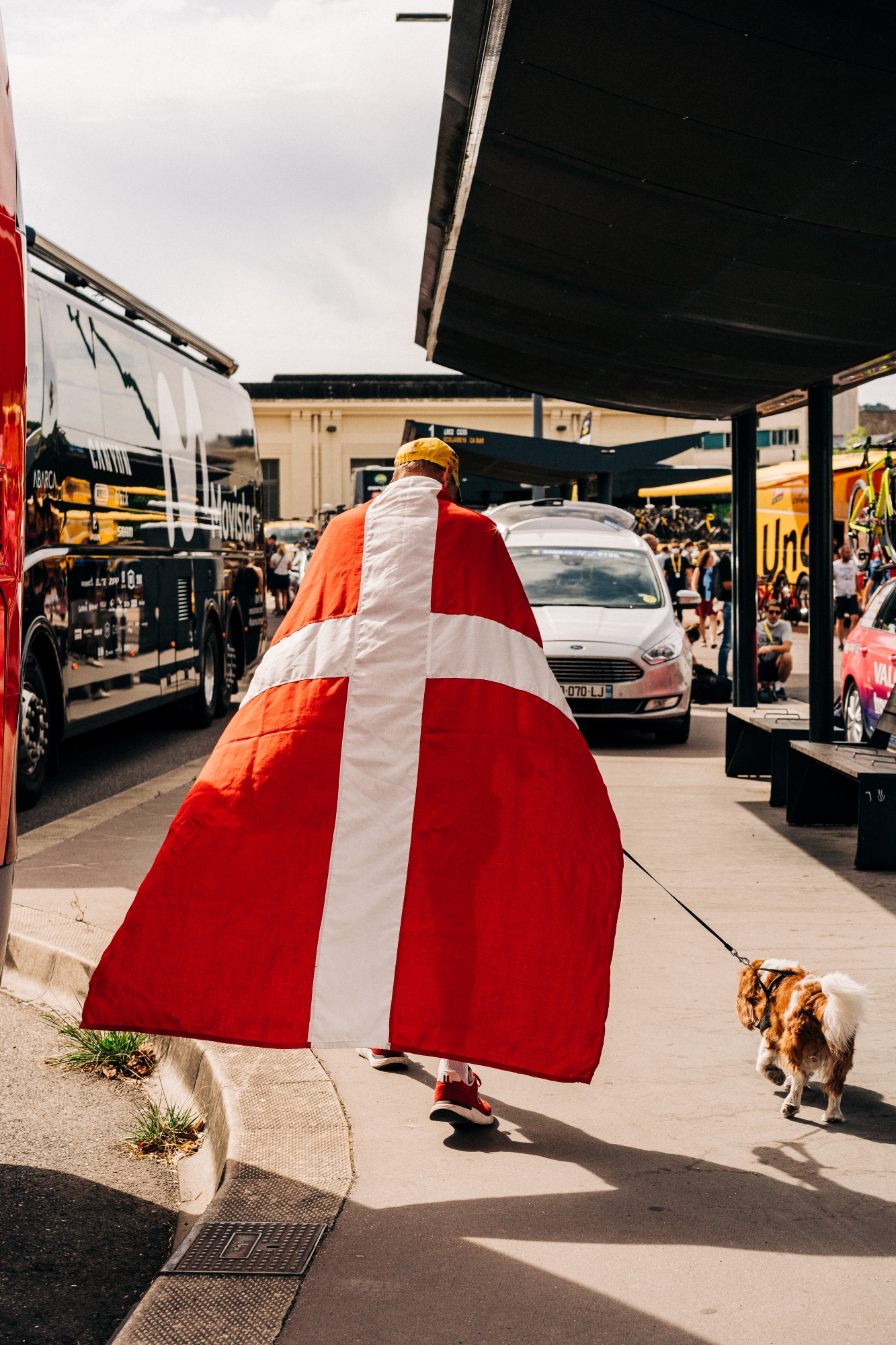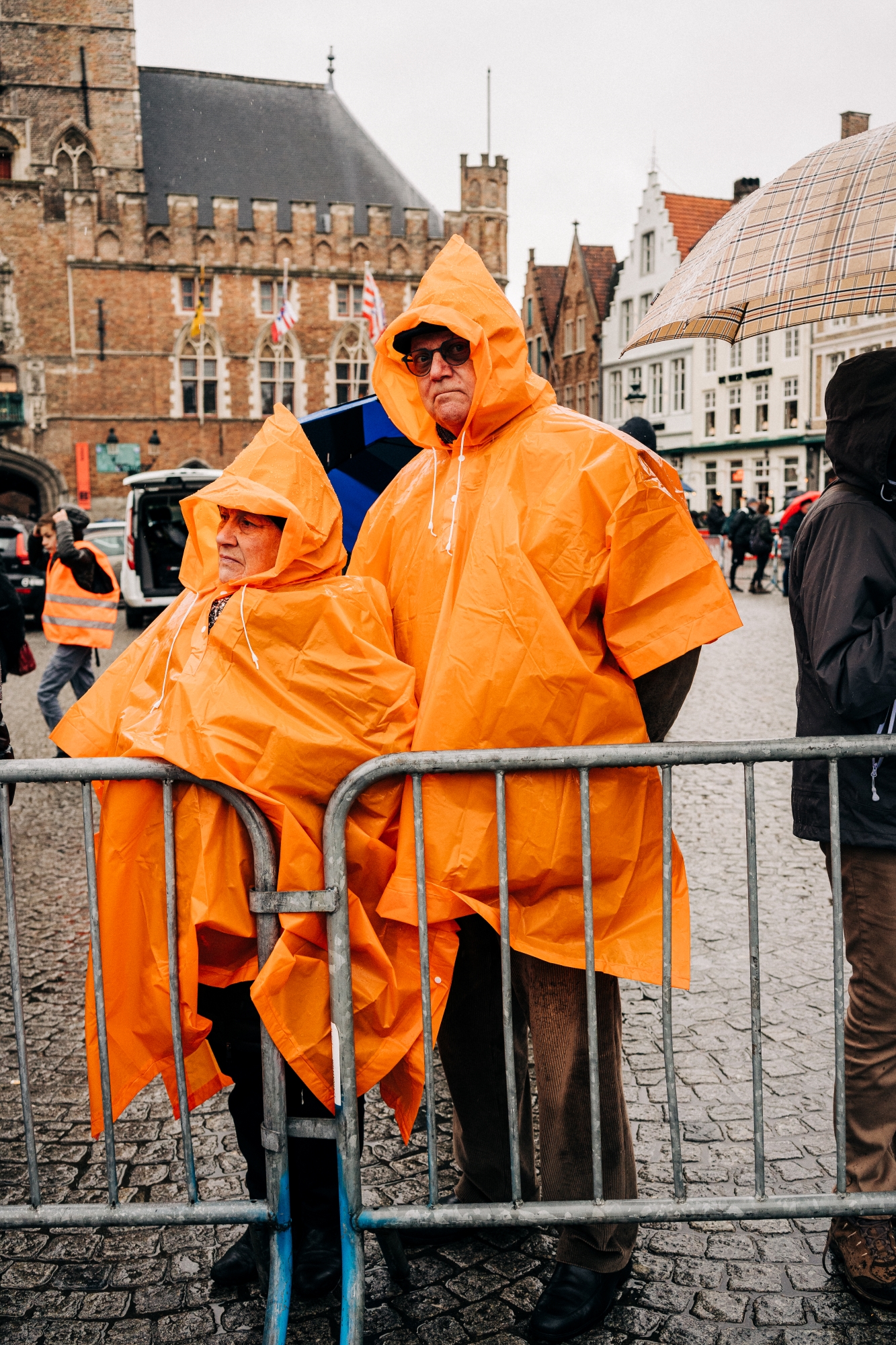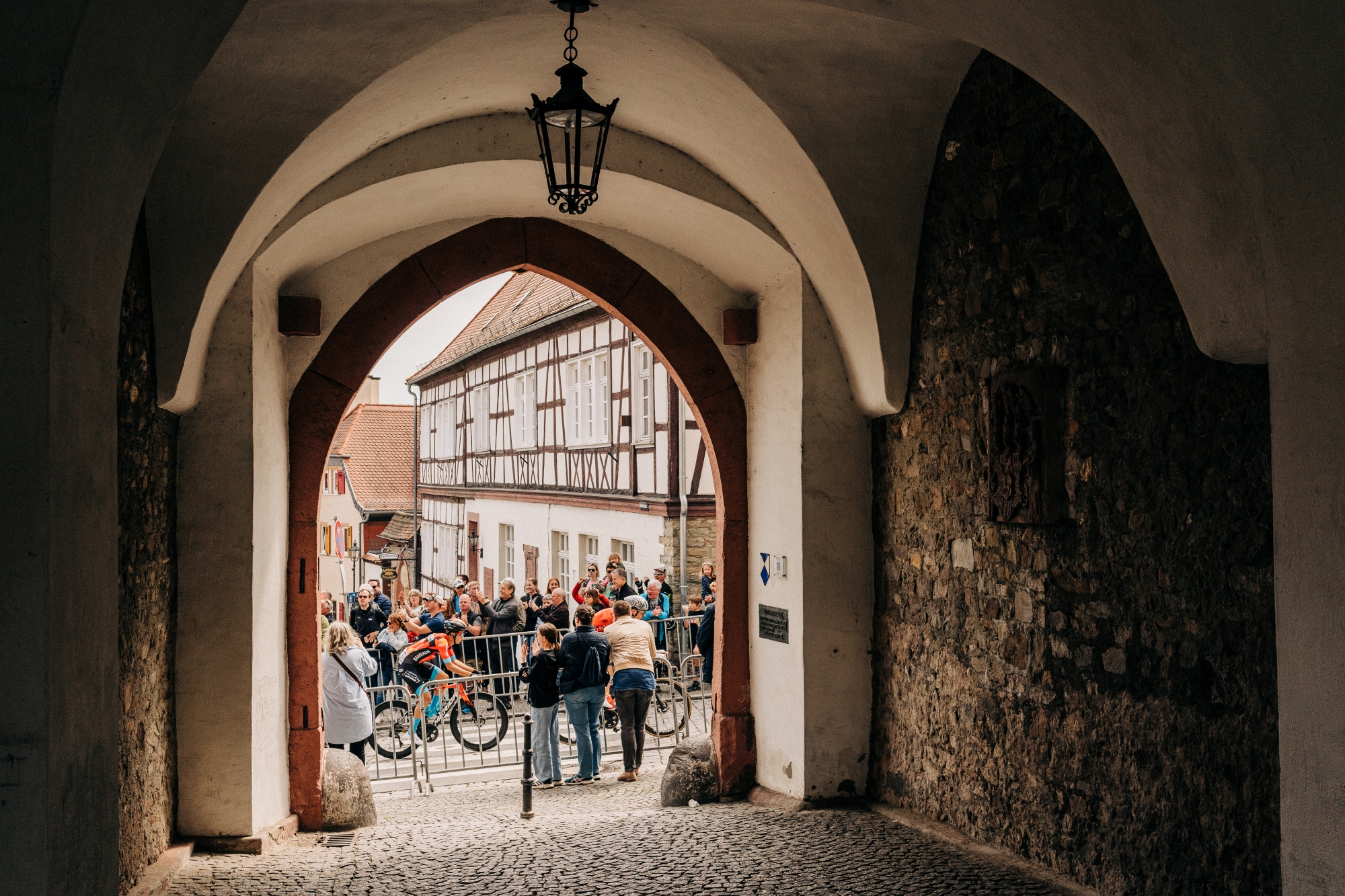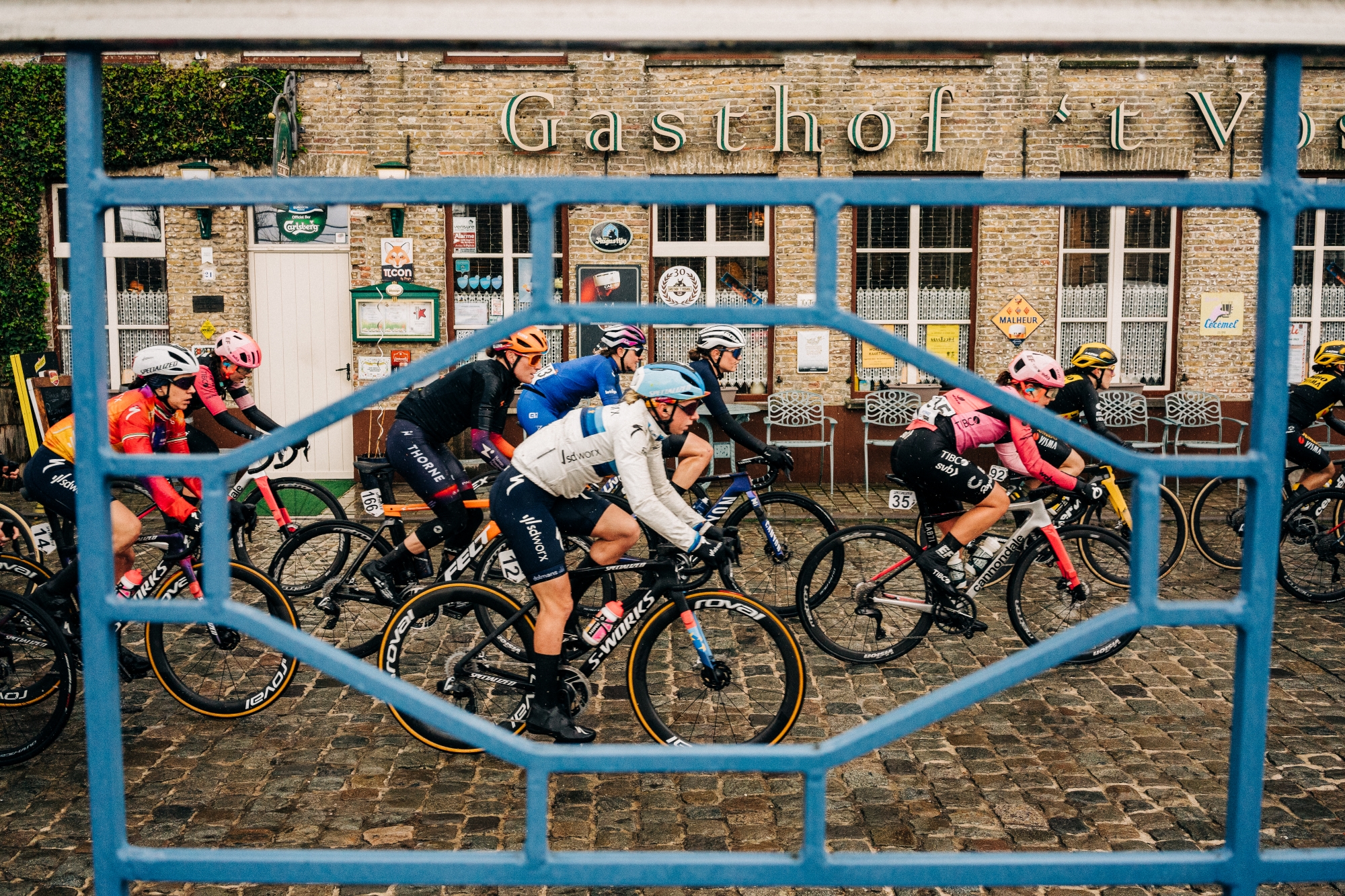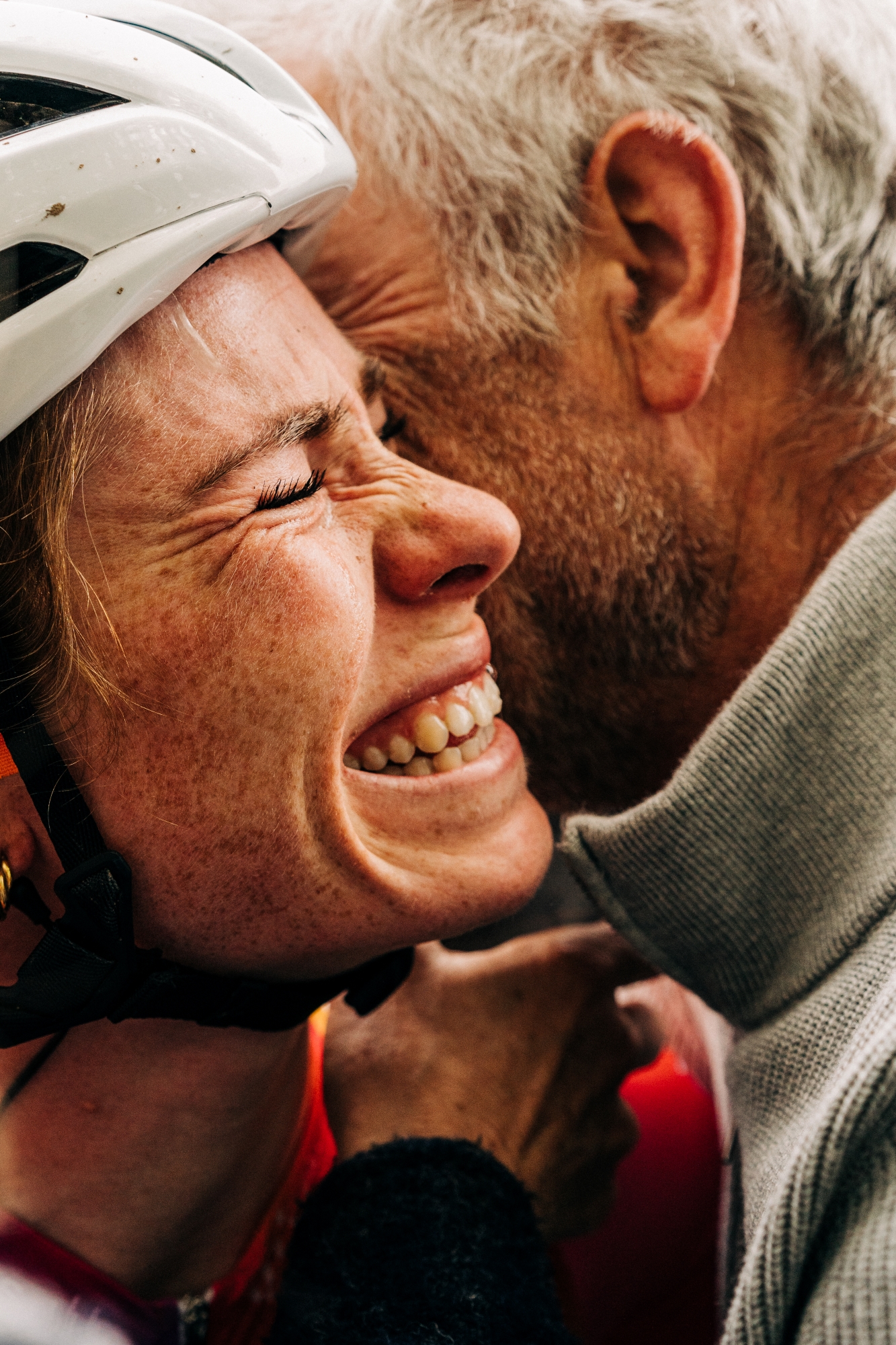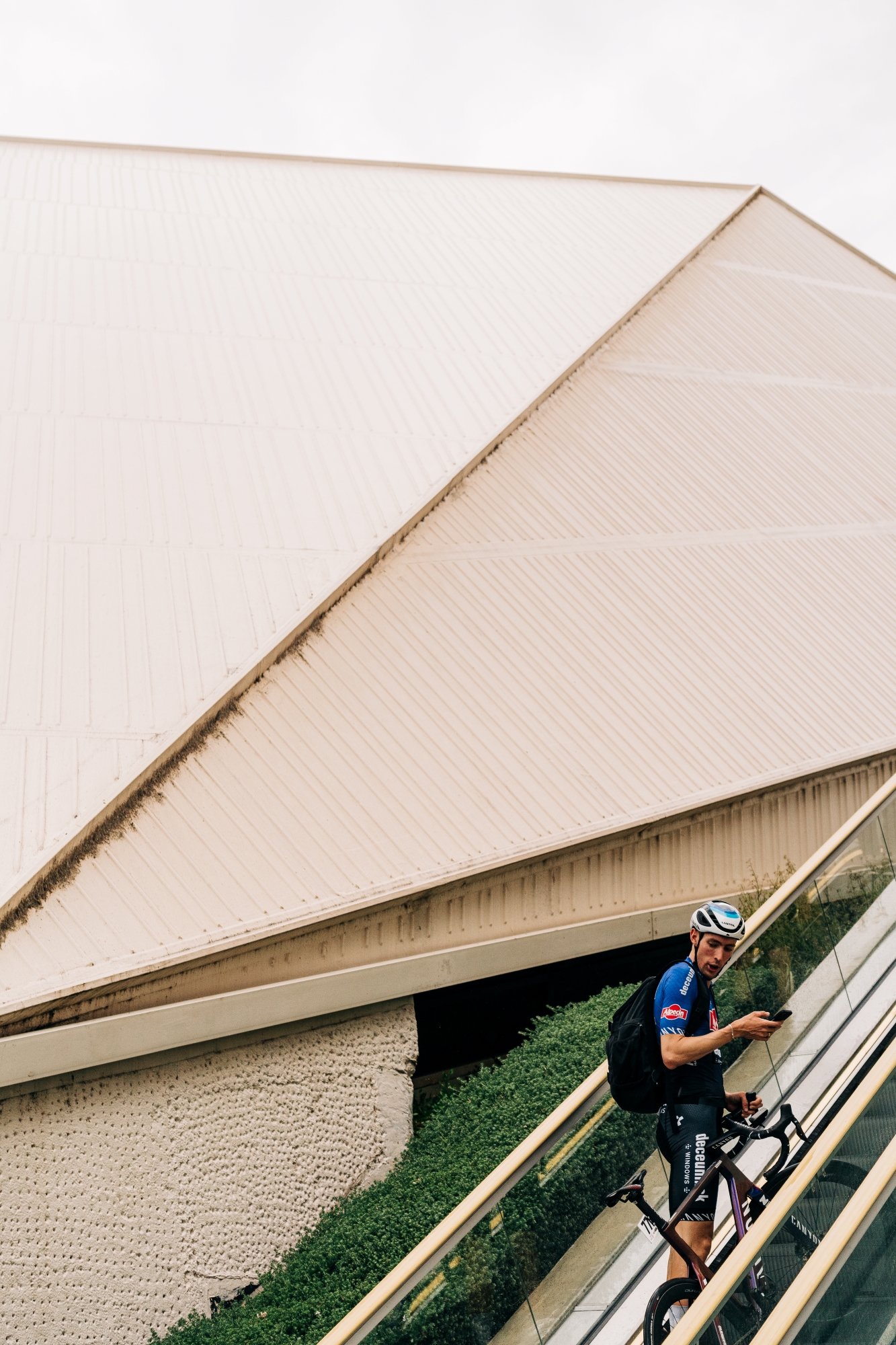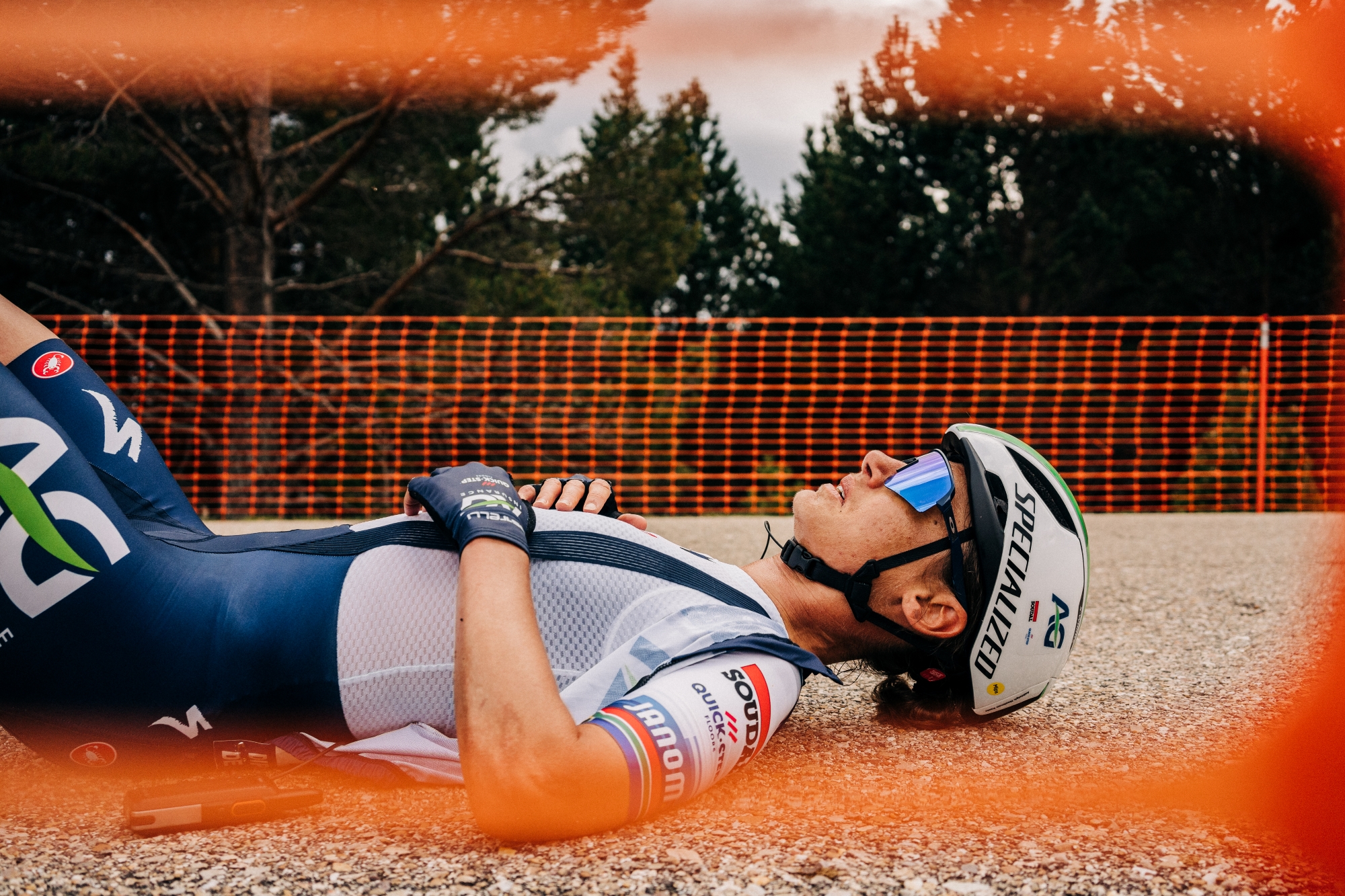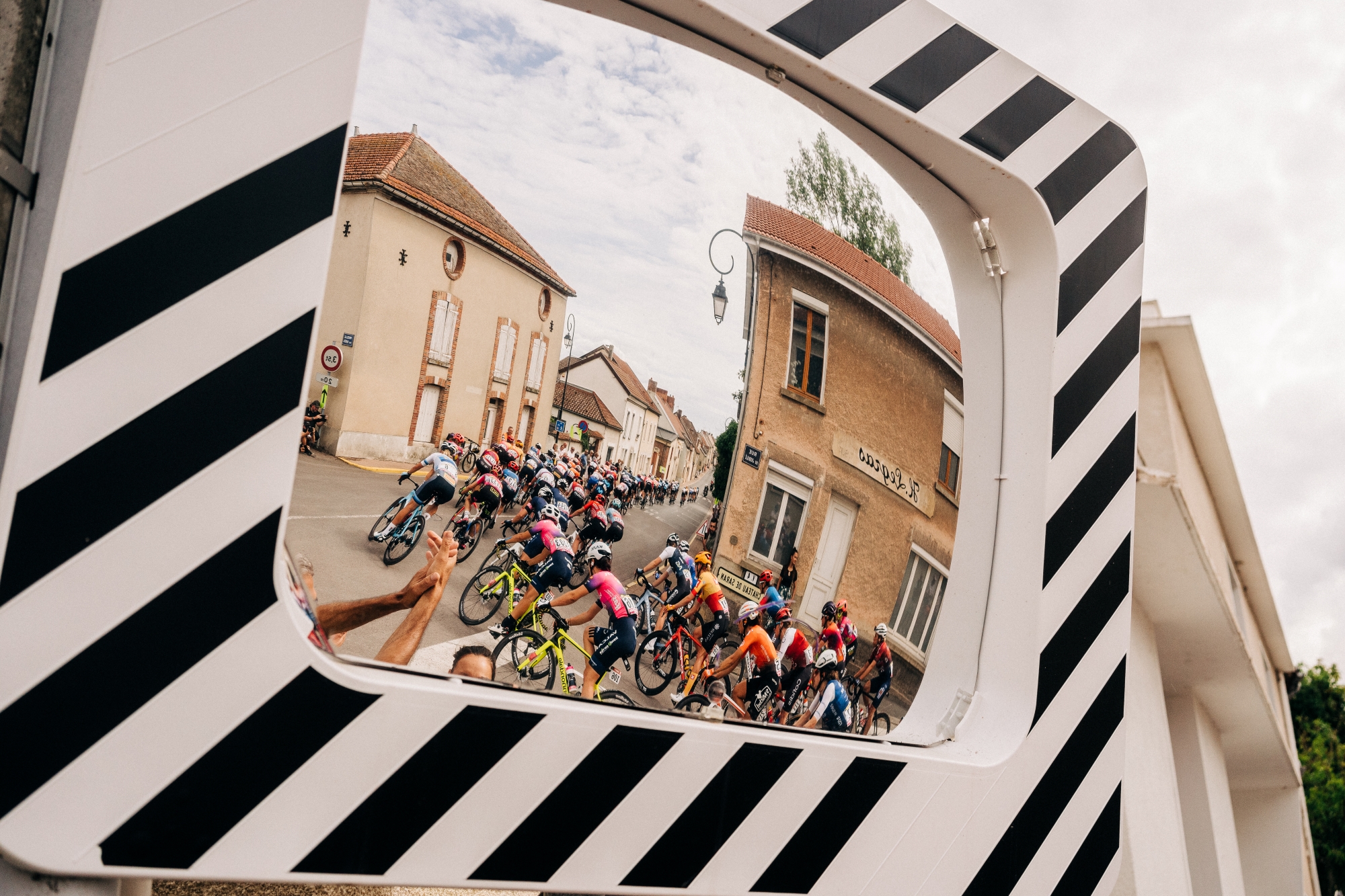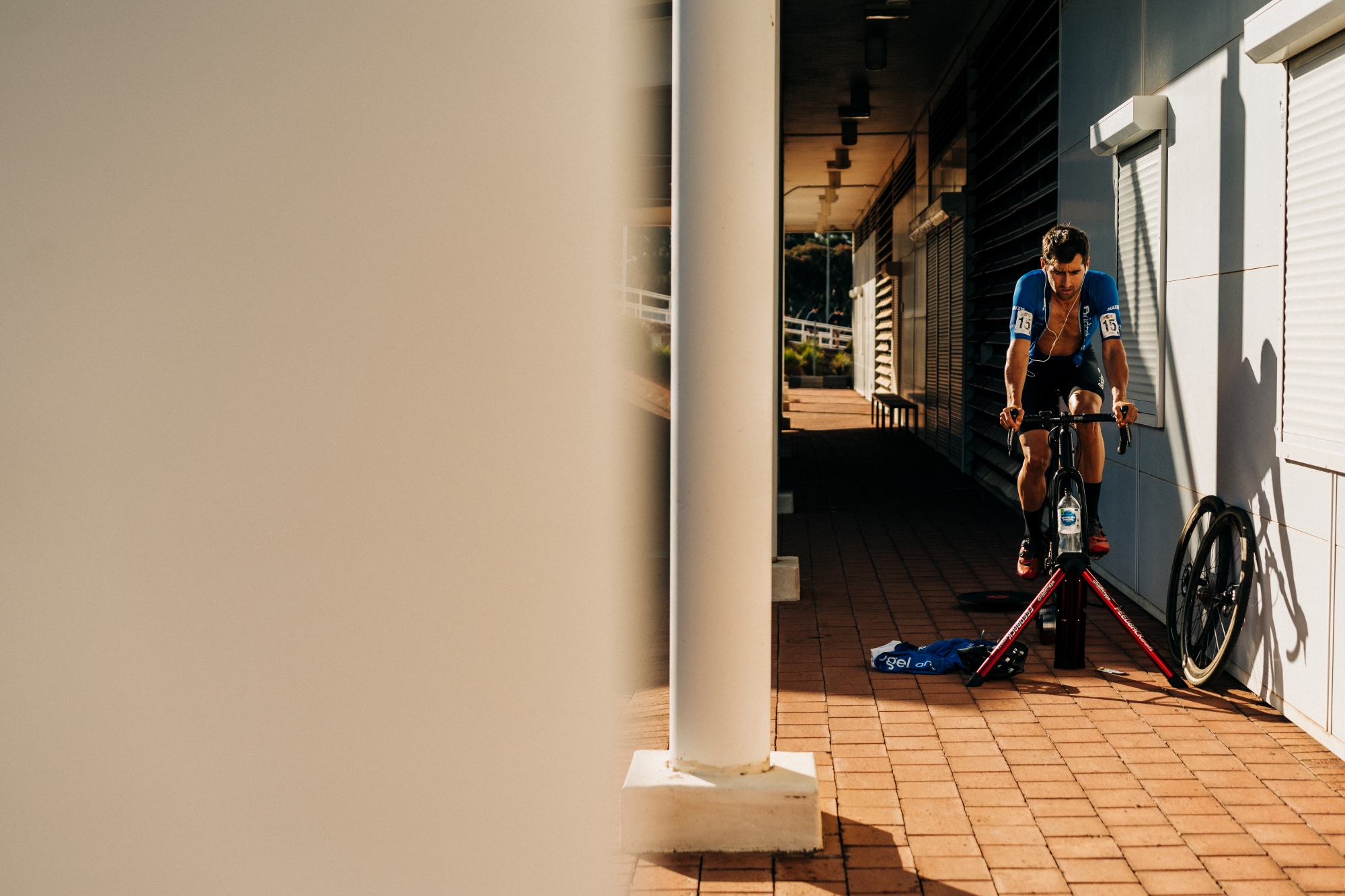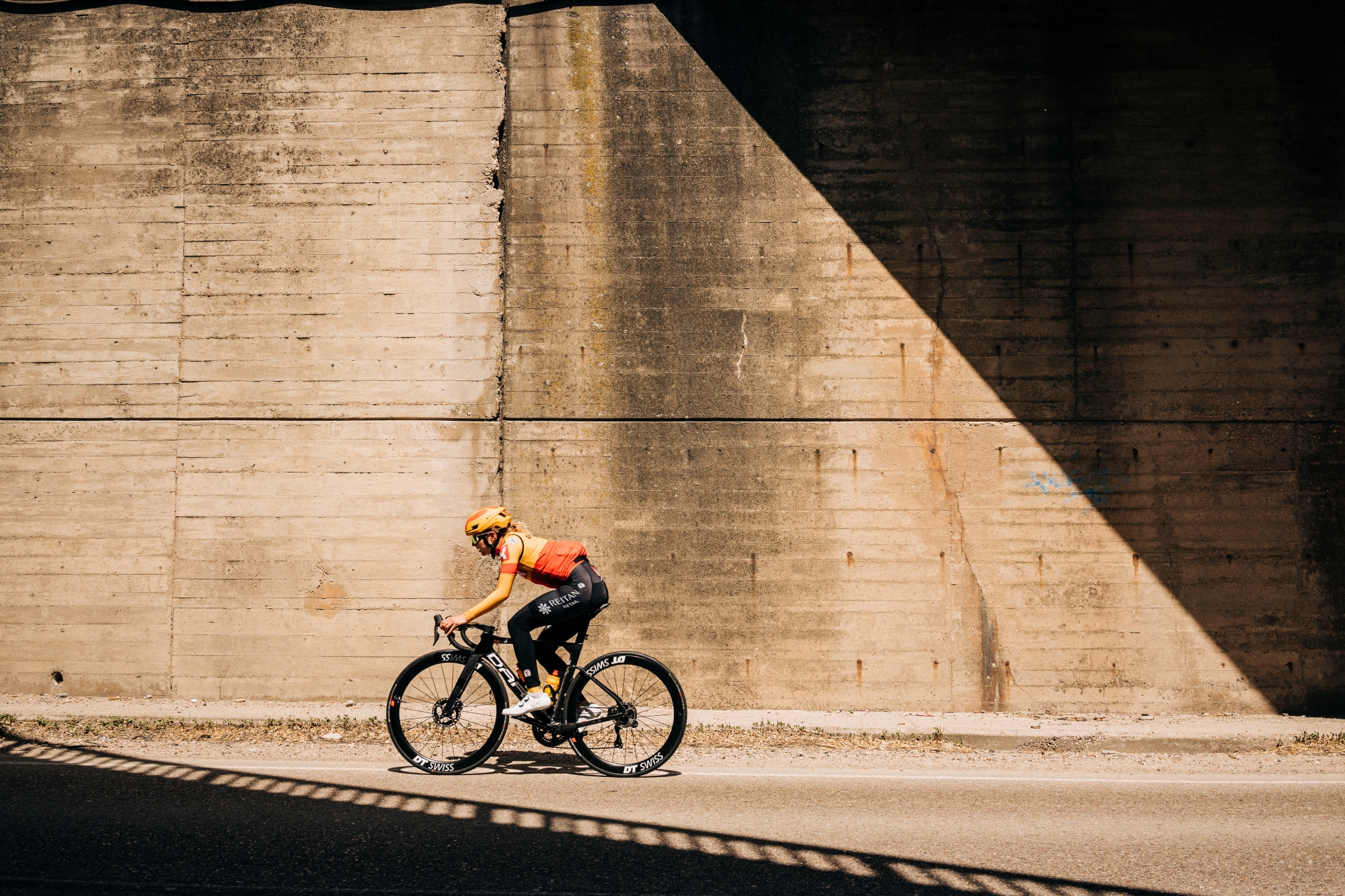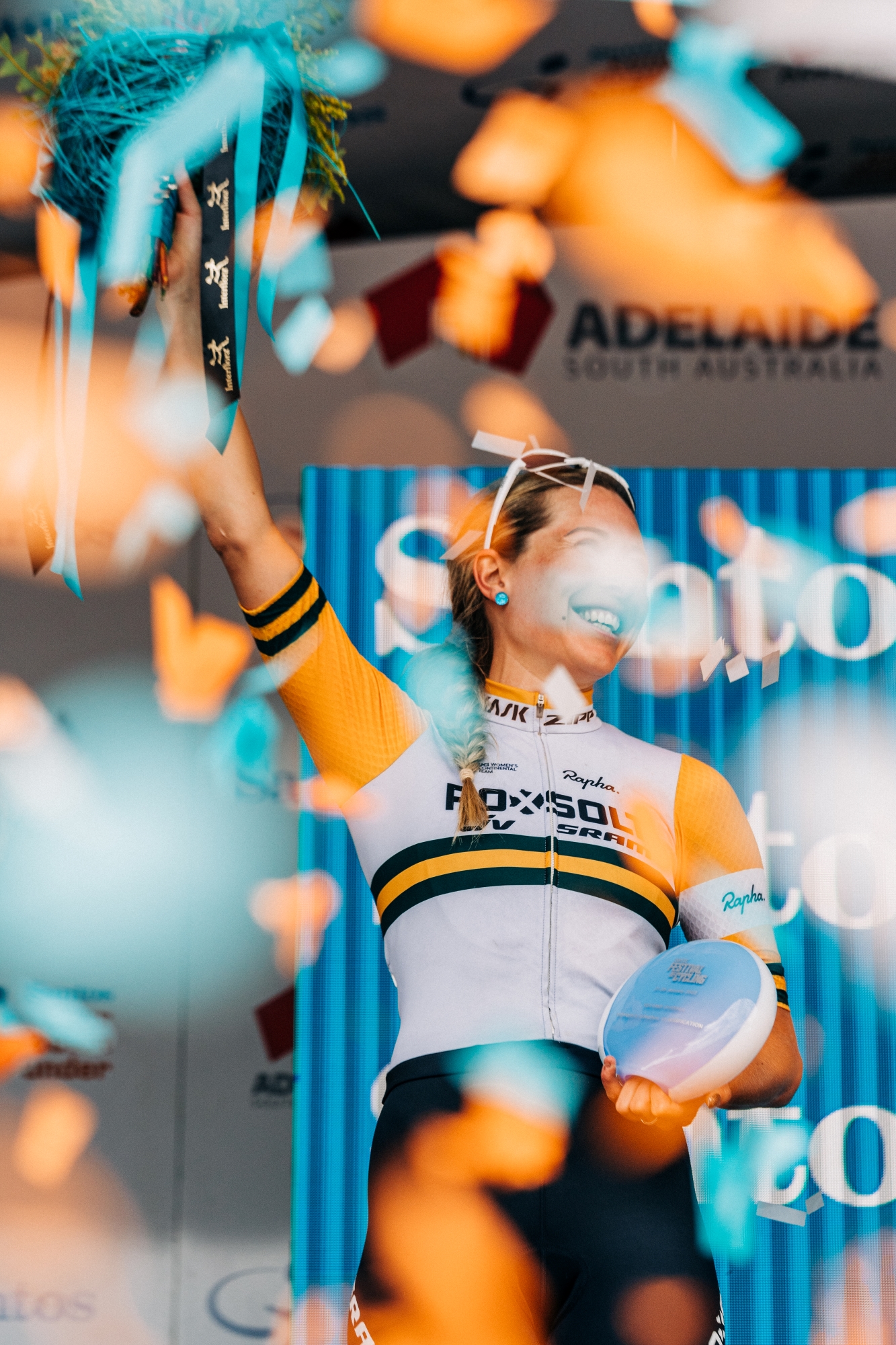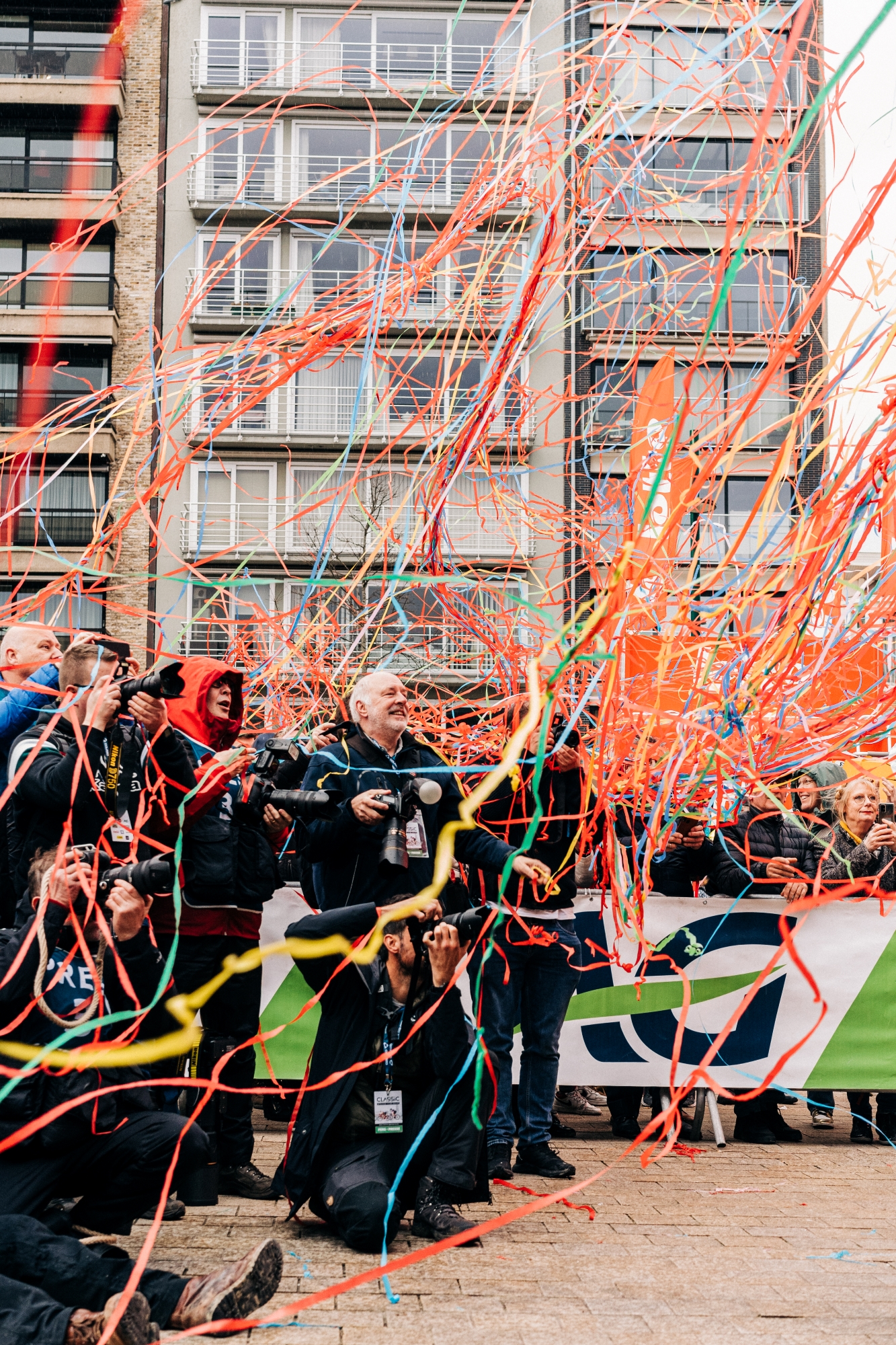Similar to the professional career of a rider, cycling photographers know that Europe is the place to be if one wants to get their work recognized. 2023 is the first full season in the continent for Andy Rogers and, coming from Australia, he is experiencing the difference between a local, crit-based racing scene and the grandiosity of the biggest races on the women’s cycling calendar.
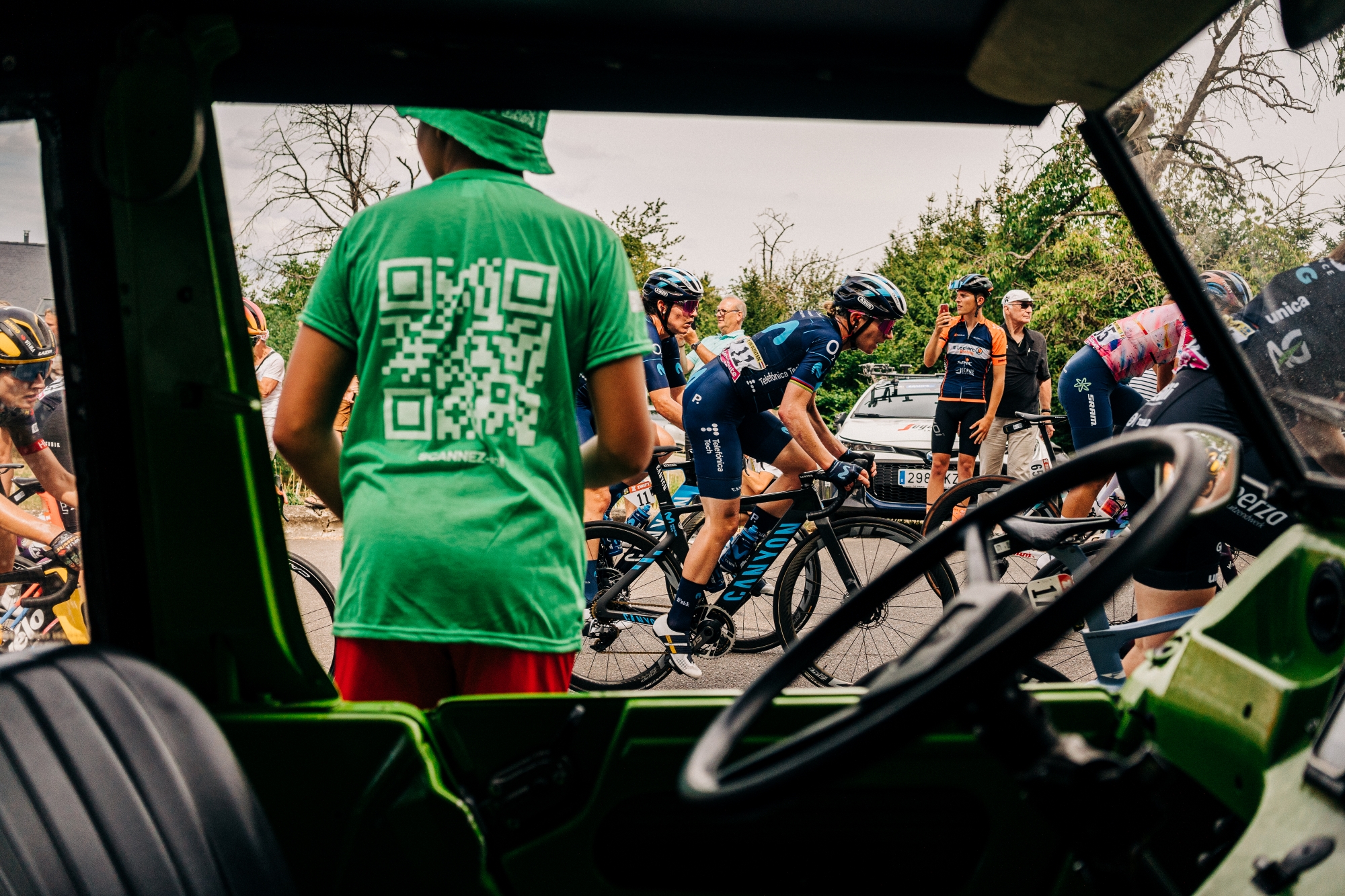
Focus on women’s racing
Andy, 30 years old, is originally from Melbourne, where he grew up until he moved to Adelaide. The Tour Down Under, the most relevant road race in the country, takes place around that city, so for several years it was his main event photography-wise. Additionally, he has been involved in many brand campaigns and mountain bike races in Australia and New Zealand, turning him into a jack of all trades.
Back then he was already shooting women’s races. “I think I started doing it because it felt underrepresented”, he says. There may not be a huge difference when taking photos of men or women if we focus exclusively on the racing part, but the last Paris-Roubaix was a good example of how facial expressions and emotions tend to be more accentuated and vibrant in women.
“They are a little bit easier to work with, which leads to better images. In general, the women’s peloton is more engaging”
Switching from men’s races to women’s races is not simply plug-and-play and, while already-established photographers may feel out of their comfort zone, Andy thrives in this environment and makes the most of every race he covers.
Tour de France Femmes 2022
The exposure in Australia is limited, so coming to Europe to pursue an international career as a cycling photographer was always in his plans.
Leaving home behind, even if only temporarily, was a process that took some years. He only switched to a full-time career in photography in 2022, as before that he had to combine photography with his nine-to-five job. Andy was a bike mechanic and also worked for the Australian Olympic team as Stock Controller, and back then he saved most of his holidays for January, when The Tour Down Under takes place. He sacrificed his time off for the greater goal, but it was rewarded as he fulfilled his dream of traveling to Europe in June of that year to cover the Tour de France Femmes.
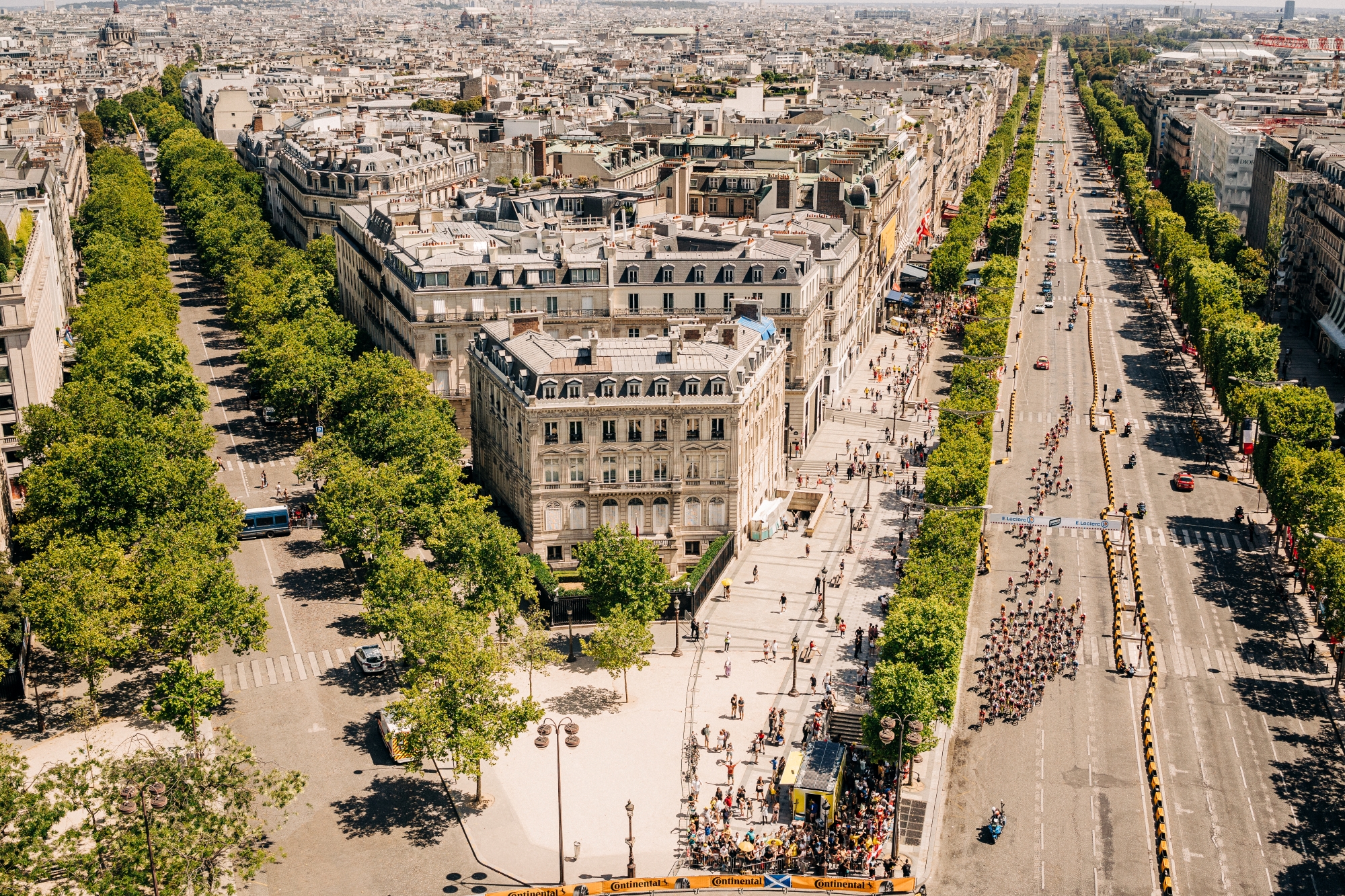
Without any teams or brands on his portfolio, Andy had to show during that race what he was capable of. There was obviously pressure to deliver, but that experience was mainly about checking what cycling in Europe is about.
“Several photographers have told me that they are jealous about me experiencing all these races for the first time, with fresh eyes”, he mentioned. The Tour de France Femmes 2022 was a first for everyone: teams, organizers, and photographers. For Andy it was also the first race ever in Europe, so everything was a big question mark.
“It is as crazy as I expected, which is cool. The smallest races here are about as big as the biggest races back home. So the big races are just unbelievable”
His original plans on how to cover the race fell apart a few days before the start, but luckily Bastien Gason was willing to help and they ended up sharing a van to follow the race. “I would not have been able to do it without him”, said Andy, mentioning also how helpful were Bastien’s French skills to dealing with the gendarmerie and more.
Shooting for a team
It was a productive trip because, a couple of months later, Uno-X requested his services for the whole 2023 season, meaning that this time he would be based in Europe for most of the year.
The team and Andy planned the calendar before he came over, so there was more or less an idea of what his first proper time in Europe would look like. He is now fully immersed in the nonstop racing circus, but also taking advantage of the whole experience by visiting a bunch of new places in between races, like going on mini holidays.
He chose Ghent as his base during his time in Europe because of its proximity to the spring classics and the service course of the team. When we met for a coffee in Leuven the sun was shining, but that day was not representative of the Belgian weather so far this year. Nonetheless, Andy is quite fine with it because in Tasmania, where he lived for the last few years, it also gets pretty cold in winter.
The most striking thing for him in comparison with Australia is how stocked everyone is on cycling, mentioning that back at home only a really small niche of people is into the sport, but here one can talk about cycling with every single person. “Everyone knows the results of the main races”, he said.
There is probably no one who has spent more time on a train than Andy this year, and even if living in the heart of Europe, the remote locations and early start times of women’s races have forced him to solve many logistic puzzles.
“Many times there is not a train that can get me there in time, so I would generally catch a train the day before to the nearest big city, spend the night there, and get a train at like six in the morning. It is still fine because being able to get to the races by train is definitely not a reality back home”
We felt bad for him when he explained what the Paris-Roubaix weekend looked like for him, as he went all the way to France and back for two consecutive days to cover both men and women. The end result was worth it, though.
Race day routine
Even if the press pass is helpful to shoot the start and finish of a race, the rest of it is chaos, no matter if you have the photo vest or not. Photographers usually share vehicles to get to the main photo spots, and hearing Andy explain how the routine on race day works, we couldn’t contain ourselves from thinking how hilarious it may be to see all those photographers trying to get that same photo.
“Everyone is there, moving slightly to the left or slightly higher just to get a different angle. If we are at a popular spot it is funny to look back and see a little pile of photographers all together”
When he is on his own, he finds it quite limiting because he is usually moving with the soigneurs and he can only take photos around the feed zones, unless the course is a smaller circuit, something he is used to from his time covering criteriums in Australia.
Once the race is over, the result of the team influences how quickly Andy should deliver the content. “If a rider finishes on the podium, it is immediate. Once the race is done you open the laptop, get the photo edited and send it right away”. If they finish inside the top 10, he would still process the content reasonably quickly, but there is not the same type of urgency as for the photographers that work for the big agencies.
Camera gear
According to him, his camera gear selection is quite limited, but it is what he has been using since the beginning. Specifically, he has a Sony body and three prime lenses, which is somewhat unorthodox by sports photography standards.
With only one camera body he sometimes faces situations in which he has to quickly switch lenses, and although it may not be ideal, Andy is comfortable with it. He says that it is like living on the edge, but that he can manage.
Shooting style
When asked about his shooting style, he said that he tends to focus on the racing part as little as possible. “I mean, I still take normal racing photos but I try to focus more on the environment and the people”, he pointed out. Andy prefers the little moments and details rather than just straight action, which is a trend that other photographers are also adopting.
The output also relies on good editing skills, and he considers himself lucky because the way he used to process his content and the requirements of the team he works for are very compatible. For his social media channels, he crops his photos to a traditional medium format aspect ratio, and he also mentioned that he is not a fan of the current trend of spreading landscape images across different slides.
Permanent base in Europe?
There are several cycling photographers from Oceania, some now based in Europe while others come and go. Zac Williams and Harry Talbot have a similar origin but they currently shoot the biggest races, with the recent Giro d’Italia as an example. As for Andy, the Giro Donne and the Tour de France Femmes await on the horizon, and many other races will keep him busy displaying his photography skills.
He will travel back to Australia in October and, even if not 100% sure yet, he will only spend a handful of months there before returning to Europe. Last time he bought his plane ticket with a set return date, but we will see if in 2024 he decides to go with the flow and keep the door open for a possible permanent stay in Europe.



